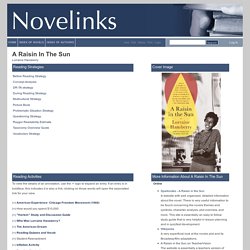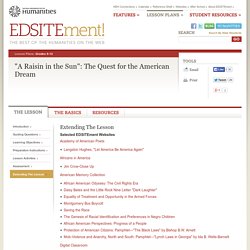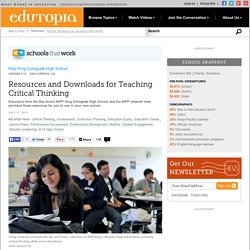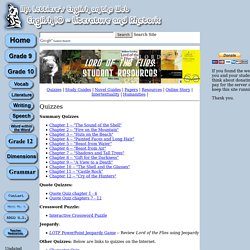

Fostering Independence: The Key to Small Group Instruction. Educators know that the whole-class lesson is just one small part of instruction, and that differentiating instruction is critical; it’s how we ensure that we meet the unique academic needs of each and every child.

The Compelling Why: Using Short Texts to Support Close Reading. Using short informational texts can be a powerful instructional tool, but it’s not always clear exactly why we should use them…or how!

I want to start with a note the value of using authentic texts with young readers: there are so many different types of informational materials in the world—from brochures to directions and recipes, to blurbs and biographies—and students need to be exposed early on to real-world informational text in the classroom. In the small group setting, teachers can guide students during close reading and supported re-reading of short texts, and differentiate instruction based on students’ individual needs. Using these types of short informational texts gives teachers three powerful instructional strategies: Focus and target instruction Provide opportunities to practice reading informational and authentic text Prepare students for the types of texts they will find on the new assessments Focus and Target Instruction Assessment Preparation. Using Student-Centered Comprehension Strategies with Elie Wiesel’s Night.
ReadWriteThink couldn't publish all of this great content without literacy experts to write and review for us.

If you've got lessons plans, videos, activities, or other ideas you'd like to contribute, we'd love to hear from you. More Find the latest in professional publications, learn new techniques and strategies, and find out how you can connect with other literacy professionals. More Teacher Resources by Grade Your students can save their work with Student Interactives. More Home › Classroom Resources › Lesson Plans Lesson Plan Student Objectives Session One Session Two Additional Sessions Session Three Extensions Student Assessment/Reflections Students will read and discuss a memoir. use reciprocal teaching strategies (summarizing, clarifying, generating questions, and predicting). work collaboratively to explore and discuss readings. present and discuss information orally. Media/files/swREVISEDHollySmithBig6PACKET.pdf. Pmwiki.php?n=Novels.ARaisinInTheSun. To view the details of an annotation, use the '+' sign to expand an entry.

If an entry is in boldface, this indicates it is also a link; clicking on those words will open the associated link for your view. "A Raisin in the Sun": The Quest for the American Dream. Activity 1.

What is the American Dream? Lead students in a succession of questions that engages them in a discussion about the concept of "The American Dream. " Record students' responses on a board or on large display paper and categorize them according to social, educational, economical, political and religious reasons. If there are students from other countries in the class, allow them to discuss their stories of immigration if they choose. Ask students: Why do people from other countries immigrate to America? Have students write out their definition of "The American Dream". Tell students that they will examine various documents and read and analyze the play A Raisin in the Sun by Lorraine Hansberry to understand how the quest for "The American Dream" affected African Americans during the 1950’s.
Activity 2. Many, Many Examples Of Essential Questions. Many, Many Examples Of Essential Questions by Terry Heick Essential questions are, ask Grant Wiggins defines, “‘essential’ in the sense of signaling genuine, important and necessarily-ongoing inquiries.”

These are grapple-worthy, substantive questions that not only require wrestling with, but are worth wrestling with–that could lead students to some critical insight in a 40/40/40-rule sense of the term. I collected the following set of questions through the course of creating units of study, most of them from the Greece Central School District in New York. In revisiting them recently, I noticed that quite a few of them were closed/yes or no questions, so I went back and revised some of them, and added a few new ones, something I’ll try to do from time to time. Or maybe I’ll make a separate page for them entirely. Decisions, Actions, and Consequences What is the relationship between decisions and consequences? Social Justice What is social justice? Culture: Values, Beliefs & Rituals Creation. Resources and Downloads for Teaching Critical Thinking. Tips for downloading: PDF files can be viewed on a wide variety of platforms -- both as a browser plug-in or a stand-alone application -- with Adobe's free Acrobat Reader program.

Click here to download the latest version of Adobe Reader. Click on any title link below to view or download that file. Stephen Burt: Why people need poetry. Mr. Lettiere's English 10. Quizzes | Study Guides | Novel Guides | Papers | Resources | Online Story | Intertextuality | Humanities | Quizzes Summary Quizzes Quote Quizzes: Crossword Puzzle: Interactive Crossword Puzzle.

An Introduction to Julius Caesar Using Multiple-Perspective Universal Theme Analysis. Overview Featured Resources From Theory to Practice Students begin by evaluating the universal theme of betrayal from multiple perspectives.

After reading time period scenarios as well as reflecting on personal experiences, students use critical thinking skills to explore and identify interventions for each the betrayal scenario, including their personal examples. Students research Roman history, the setting of Shakespeare’s drama, The Tragedy of Julius Caesar. Back to top In their article, “Reading From Different Interpretative Stances: In Search of a Critical Perspective,” Leland, Ociepka, and Kuonen (2012) report a study that they conducted in which eighth grade American students were introduced to several critical perspectives while reading short stories (430). DelliCarpini, M., & Gulla, A. Leland, Christine, Anne Ociepka, and Kate Kuonen. Teaching Shakespeare's Julius Caesar: Common Core-Style. For the first eight years of my teaching career, my Shakespare daily lesson plans went something like this: "Good morning!

Turn to Act II Scene 1 on page 234. I'm going to push play on the CD, let's listen to a few lines... " (Actors performing while students follow along for about 30 seconds. Pause CD.) Once in awhile, I would have the students act out a scene or two... but that usually led to monotone recitations and awkward moments helping students pronounce words. I think many people would relate to these methods. We were studying the play a mile wide and an inch deep.